This article describes how to change and customize the Quick Access feature in Windows 11.
When you need to locate files, folders, or settings in Windows 11, the Quick Access feature simplifies the process by allowing you to retrieve them without sifting through the entire hard drive, which may contain thousands of files.
By default, File Explorer opens to the Quick Access view.
If you want to quickly access a file or folder in Windows 11, you can pin it to Quick Access for easy retrieval later. Simply right-click on the folder and select “Pin to Quick Access.” If you no longer need it pinned, you can unpin it at any time.
Disable Quick Access in Windows 11
Windows adds frequently accessed files and recent folders to Quick Access for easy retrieval. Quick Access helps you find things quickly.
To prevent frequently accessed items from appearing, you can disable the Quick Access feature.
You can also customize and change Quick access settings so that it only shows you pinned files and folders and does not show recent and frequently accessed files and folders.
To do that, open File Explorer, go to the three dots on the menu, and then select Options, as highlighted below.
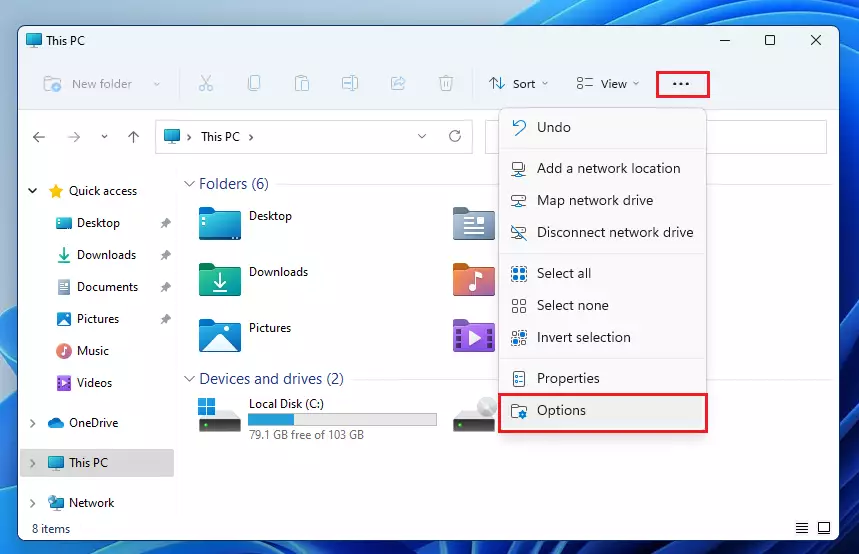
Select Open File Explorer to This PC in the folder’s general tab. And then, in the Privacy section, clear the checked boxes and select Apply.
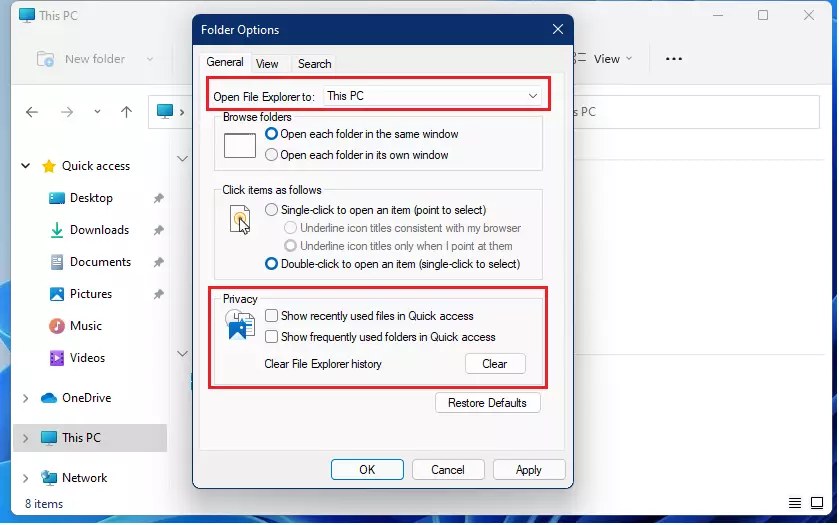
Apply your changes, and quick Access will be disabled.
How to pin or remove items from Quick Access
If you frequently use a particular folder, you can have that folder appear in Quick Access so it’ll be easy to find when you need it again. To do that, simply right-click the target folder and select Pin to Quick Access.
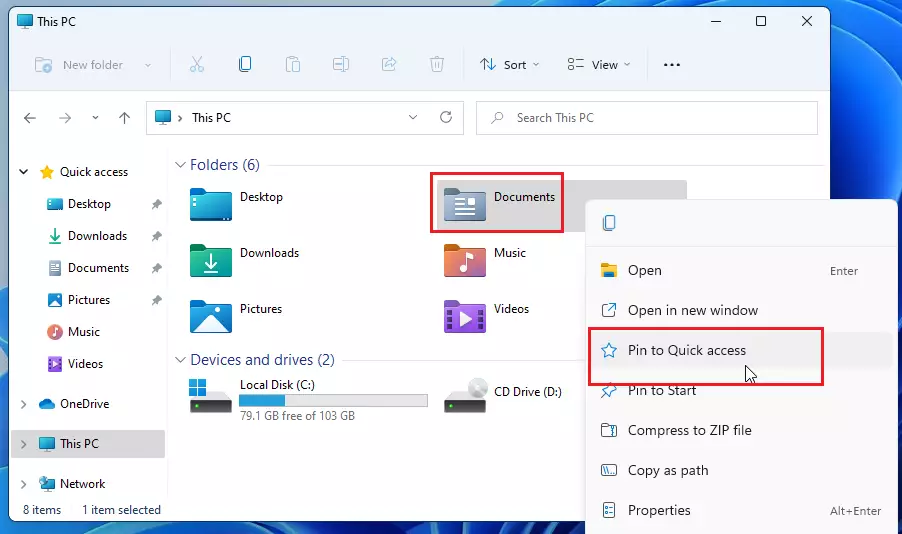
To unpin or remove the folder from Quick Access, simply right-click the folder and select Unpin from Quick Access, as highlighted below.
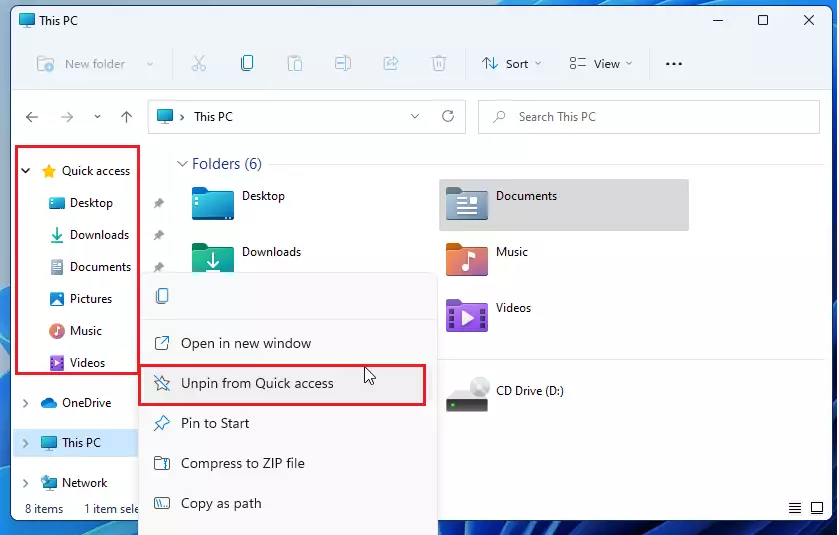
How to show only pinned folders in Quick Access
Quick Access has some good features. If you don’t want to completely deactivate it but turn off recently accessed files and folders, you can enable Quick Access but turn off the recent access feature.
Open File Explorer and go to the three dots to access the Options settings. Make sure the option to Open File Explorer is set to Quick Access. In the Privacy section, clear the check boxes and select Apply.
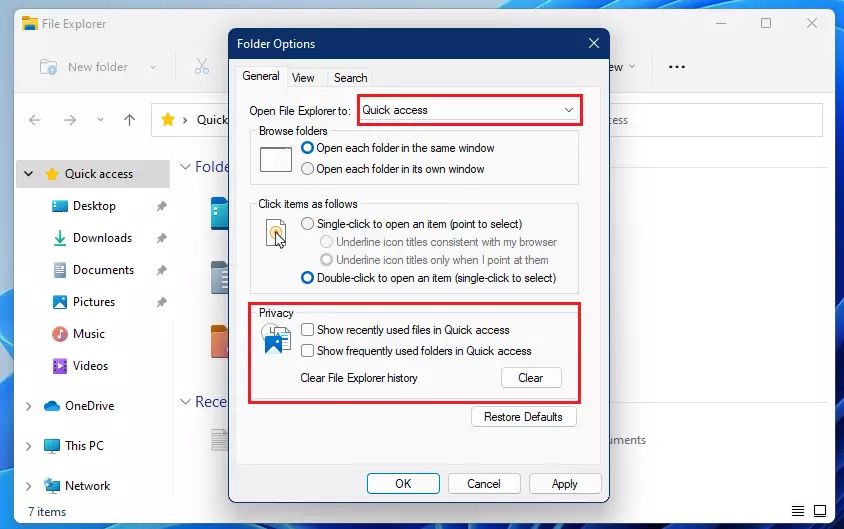
Now Quick Access will only show your pinned folders.
That should do it!
Conclusion:
- Quick Access in Windows 11 simplifies file navigation by allowing easy access to frequently used items.
- Users can customize Quick Access by pinning important folders for quick retrieval.
- It is possible to disable or modify the display of recent and frequently accessed files.
- Accessing Quick Access settings is straightforward, providing flexibility to users.
- Personalizing Quick Access enhances productivity and saves time in file management.

Leave a Reply